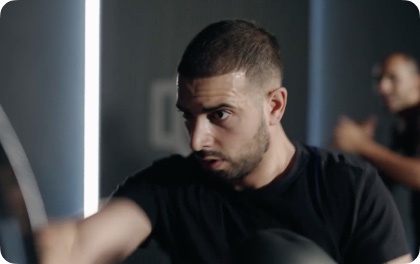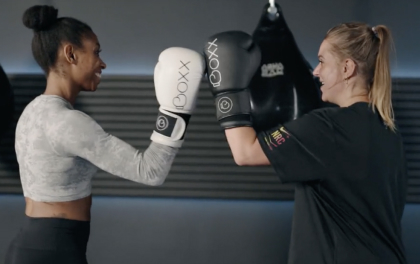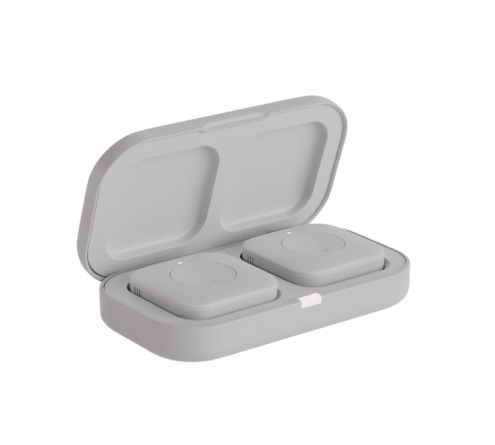
Emma, our resident exercise psychologist, explores the five tools that assist in developing a new relationship with exercise.
1. “Self-monitoring of behaviour”
Otherwise known as ‘tracking’, self-monitoring your exercise behaviour means keeping a track of what you do. For example, you might keep a note in your Boxx+ app of how many home Boxx sessions you complete each week or use your Punch Pods to keep a track of your average punches per minute. It is important to ensure you keep a track of your actions, not the outcome. For example, keeping a track of weight loss is an outcome, not a behaviour. But keeping a track of exercise sessions you have attended (by ticking it off on a calendar) that might result in weight loss is an example of want we want to focus on (as without action, and outcome won’t happen!). You can find out more about tracking here.
For any of the following tools to work, you must use them in conjunction with ‘self-monitoring of behaviour’; you can think of tracking as the “secret sauce” or the “active ingredient” that makes these other tools work.
2. “Goal-setting of behaviour”
Stemming from tracking, set a goal that is focused again on behaviour, not an outcome. A behaviour- focused goal might be completing three Boxx+ sessions at home and one in studio Boxx session per week. An outcome goal is losing 5 kilograms in 10 weeks. By setting a behavioural goal, this will place your focus upon creating a life that includes exercise, rather than one that is focused on a distant outcome (that will probably occur anyways if you focus upon the behaviour).
Next, consider setting a relative goal rather than a specific goal. This involves setting a goal that is in relation to your current point. For example, if you completed two Boxx sessions a week in your first month, you might set the goal of attending three sessions a week across the second month. If your friend ran a total of 10 kilometres a week in the first month, they might set the goal of running 12 kilometres a week across the second month. Both of these goals are relative to the individual.

Lastly, setting daily and weekly goals is most effective in producing a change in exercise behaviour. For example, you might have a daily goal of walking 4000 steps, in turn making a 28000 step goal across the week. By having both, you are provided with flexibility in that you may work towards your daily goal but can do more or less on any given day to aspire to your weekly goal.
3. “Review of behavioural goals”
Setting goals is great but reviewing them is also very important. Without reviewing, it is difficult to know whether to celebrate the goal being achieved, whether the same goal needs to be reset and attempted again, or whether the goal still aligns with want you are aiming for.
Reviewing your goals should occur either weekly or fortnightly. An example is setting a time each Sunday to look back over your tracking records or your Boxx app and seeing if you reached your weekly exercise goals. From there, you might change your daily goals for the next week to promote success, which may involve increasing your daily activity further, or changing the activity altogether.
4. “Feedback on behaviour”
Gathering informative feedback on your specific exercise behaviours will help shape your future actions. For example, in attending an in-studio Boxx session you will receive feedback from the trainers on your form and intensity during the workout. Alternatively, you can use the live feedback provided from your Boxx+ app data when working out at home. If you have set a punches per minute goal, seeing this information live on the app while working out can let you know if you need to increase your efforts.
5. “Action planning and if-then”
We might have great intentions of working out, but often a little planning goes a long way to seeing these intentions turn into action. Consider the “when, where, how, and who” or your exercise plan. For example, you might plan to workout at home every Monday, Wednesday, and Friday morning at 6am with your housemate by completing a Boxx+ session.
If when you review your goals you find a common pattern or occurrence that often prevents you from carrying out your best workout intentions, creating an “if-then” plan can help. For example, if you find you often run late at work and this means you miss the 5pm Boxx class, an “if-then” plan is a strategy to assist in overcoming the barrier. For example, “If I get held up at work and miss the 5pm Boxx class, I’ll go straight home and do the same style session via Boxx+”

By using the strategies, you can utilise 3 months to explore building a healthy and consistent exercise regime. During this time, you might also consider downloading the Boxx+ app.



